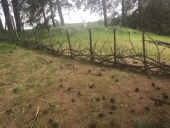

 4
4




Some places need to be wild
 2
2




Moderator, Treatment Free Beekeepers group on Facebook.
https://www.facebook.com/groups/treatmentfreebeekeepers/






 4
4














 2
2




Some places need to be wild
 3
3




To be is to do …Kant
To do is to be ..Nietzsche
Do be do be do…Sinatra










 2
2




Some places need to be wild
 1
1




To be is to do …Kant
To do is to be ..Nietzsche
Do be do be do…Sinatra
 5
5




sow…reap…compost…repeat










 2
2




Some places need to be wild
 4
4




Visit Redhawk's soil series: https://permies.com/wiki/redhawk-soil
How permies.com works: https://permies.com/wiki/34193/permies-works-links-threads










 3
3




Some places need to be wild

|
woof woof woof tiny ad woof woof
The new kickstarter is now live!
https://www.kickstarter.com/projects/paulwheaton/garden-cards
|



